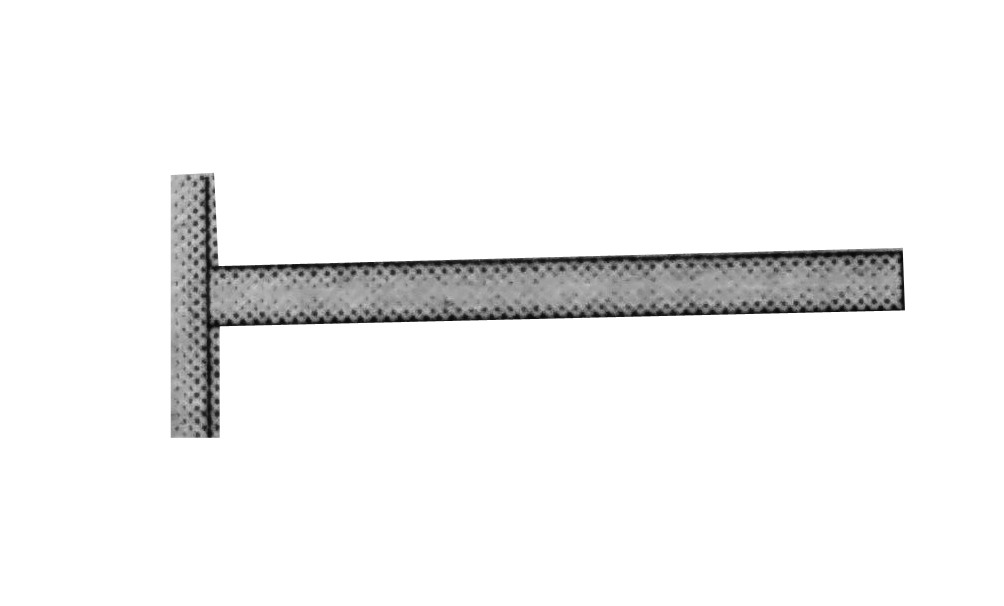Passage-III :
If the ends of a rod are rigidly clamped so as to prevent any actual expansion or contraction and then the temperature of the rod is changed, the rod will develop tensile or compressive street or thermal stress. This type of stress sometimes could be adequate to cause permanent strain or also break the rod. To avoid damages for the above said reasons concrete highways are always left with gasps between the section for the expansion or contraction of concrete In a similar way, if the temperature of an object under pressure is increased but the object is not allowed to expand, the pressure will also increase. Assuming a negative sign for a compressive stress and positive sign for tensile stress, answer the following questions
Let us now consider an object that is kept under pressure and not allowed to expand on increasing the temperature (by ΔT:γ is the coefficient of volume expansion of the material of the solid :α is the coefficient of linear expansion of the material of the solid: ρ is the density of the material of the solid: B is its Bulk Modulus of Elasticity), then the increase in its pressure will be
γB(ΔT)
αB(ΔT)
γBρ(ΔT)
γBρ(ΔT)
The correct Answer is:A
Topper's Solved these Questions
- THERMAL PROPERTIES OF MATTERBOOK - AAKASH SERIESCHAPTER - THERMAL PROPERTIES OF MATTEREXERCISE - ADDITIONAL PRACTICE EXERCISE (LEVEL - II) PRACTICE SHEET (ADVANCED) Matrix Matching Type Questions
2 Videos
- THERMAL PROPERTIES OF MATTERBOOK - AAKASH SERIESCHAPTER - THERMAL PROPERTIES OF MATTEREXERCISE - ADDITIONAL PRACTICE EXERCISE (LEVEL - II) PRACTICE SHEET (ADVANCED) Integer/Subjective Type Questions
2 Videos
- THERMAL PROPERTIES OF MATTERBOOK - AAKASH SERIESCHAPTER - THERMAL PROPERTIES OF MATTEREXERCISE - ADDITIONAL PRACTICE EXERCISE (LEVEL - II) PRACTICE SHEET (ADVANCED) More than One correct answer Type Questions
7 Videos
- SYSTEM OF PARTICLES AND ROTATIONAL MOTIONBOOK - AAKASH SERIESCHAPTER - SYSTEM OF PARTICLES AND ROTATIONAL MOTIONEXERCISE - PRACTICE EXERCISE
99 Videos
- THERMODYNAMICSBOOK - AAKASH SERIESCHAPTER - THERMODYNAMICSEXERCISE - EXERCISE - 3
33 Videos
Similar Questions
When a metal rod is heated through 30∘C the thermal strain in the rod is 3.6×10−4 .what is the coefficient of linear expansion of the metal ?
View Solution
In the given figure, a rod is free at one end and other end is fixed. When we change the temperature of rod by Δθ, then strain produced in the rod will be
View Solution
Knowledge Check

In the given figure, a rod is free at one end and other end is fixed. When we change the temperature of rod by Δθ, then strain produced in the rod will beAαΔθB12αΔθCzeroDinformation incompleteThe coefficient of linear expansion of an in homogeneous rod change linearly from α1 to α2 from one end to the other end of the rod. The effective coefficient of linear expansion of rod is
Aα1+α2Bα1+α22C√α1α2Dα1−α2A metal rod having coefficient of linear expansion (α) and Young's modulus (Y) is heated to raise the temperature by Δθ. The stress exerted by the rod
AYαΔθBYΔθαCYαΔθDαΔθY

In the given figure, a rod is free at one end and other end is fixed. When we change the temperature of rod by Δθ, then strain produced in the rod will be
View SolutionA metal rod of Young's modulas F and coefficient of thermal expansion α is held at its two ends such that its length remians invariant. If its temperature is raised by t∘c, then the linear stress developed in it is
View SolutionA metal rod of Young's modulas Y and coefficient of thermal expansion α is held at its two ends such that its length remains invariant. If its temperature is raised by t∘c, then the linear stress developed in it is
View SolutionThe coefficient of linear expansion of an in homogeneous rod change linearly from α1 to α2 from one end to the other end of the rod. The effective coefficient of linear expansion of rod is
View SolutionThe coefficient of linear expansion of an in homogeneous rod change linearly from α1 to α2 from one end to the other end of the rod. The effective coefficient of linear expansion of rod is
View Solution
